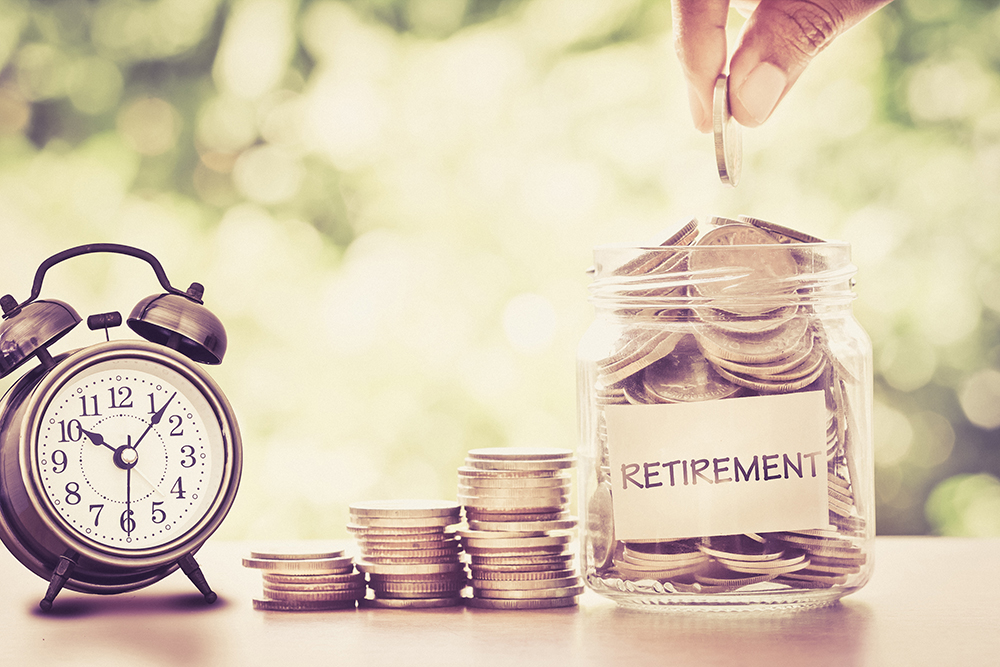What is income drawdown?
Income drawdown is one option open to people with defined contribution pensions.
Rather than using a pension pot to purchase an annuity, which will provide a stable income for a set number of years (or until you die), drawdown is where you keep your pension invested in the stock market and make withdrawals when needed.
Preparing for retirement: what to avoid, how to boost your income & more
How does income drawdown work?
Income drawdown is a form of pension product, offered by a host of different providers. You don’t need to take out a drawdown product from the pension provider you have been saving with during your working life.
When you ‘crystallise’ your pension ‒ which is essentially when you move from it simply being a pot you save into, to one that you have access to ‒ you can take out up to 25% of the pension tax-free. With drawdown, the remaining 75% is invested in the stock market.
You can start drawing down from your pension from the age of 55, and it’s entirely up to you how much you withdraw at any point. The money you draw down is treated like normal income and is taxed in the same way.
Get impartial advice from Profile Pensions

The pros of income drawdown
One of the big selling points for income drawdown is that because the bulk of your pension fund stays invested, it can grow over time should your investments perform well. This may mean you have more money to play with in retirement to provide you with a more comfortable standard of life.
This becomes even more appealing when you consider that annuities have generally been considered to provide fairly disappointing value for money for some time.
Another positive is the flexibility it provides. Income drawdown allows you to access the money you need, when you need it.
So, if you have a big purchase on the way ‒ for example on a once-in-a-lifetime holiday ‒ then you can tap into your pension pot to do so.
Finally, income drawdown is useful should you pass away, particularly when compared to an annuity. If you purchase an annuity, and then die shortly afterwards, your loved ones do not get anything from your pension savings.
But that’s not the case with income drawdown. If you die before the age of 75, your family will inherit the whole pot without paying a penny in tax.
And if you are over the age of 75, they can take the pot as a regular income or as a lump sum and will pay tax at their marginal rate of Income Tax.
The cons of pension drawdown
In an ideal world, having your pension pot remain invested means that it will increase in value over time. But the reality may be rather different.
Should the stock markets go through a turbulent time, or simply the firms in which you have invested, then the value of your pension pot will fall.
As a result, you may not have as comfortable a retirement as you were expecting or may have to remain in work longer than planned to make up for any shortfalls.
It’s not just the performance of the stock market that can lead to your pension pot proving insufficient though ‒ you also need to be incredibly disciplined about precisely how much you withdraw, not only for tax purposes but also to make sure that your pot lasts for the rest of your life.
Getting carried away and withdrawing too much money for a year or two may not seem like a big deal at the time but may leave you counting the pennies in your final years.
Another downside is that you will need to account for any fees and charges as these can add up significantly over time.
Get impartial advice from Profile Pensions

Can I still pay into my pension after drawdown?
Just because you have tapped into your pension funds for some reason, it doesn’t mean you are ready for retirement. It may be that you are still working and want to continue contributing to your pension pot for years to come to cover you for the long term.
Ordinarily you can pay in up to £40,000 a year and enjoy full tax relief on those contributions. But in a year in which you have flexibly accessed your pension, for example via drawdown, this allowance drops down to £4,000.
Retirement planning during COVID-19: what you should do & avoid
Income drawdown and COVID-19
The flexibility offered by income drawdown means that when things are a little more uncertain, you can reduce the amount you withdraw from your pot in order to help it last for the entirety of your retirement.
Things have rarely been more uncertain than at the moment, as a result of the COVID-19 pandemic, and the data suggests that pension savers are responding in kind.
The latest figures from the Association of British Insurers (ABI) shows that the number of pension savers opting to draw down money from their pension fell by 42% in April compared to the same point in 2019. This followed a 15% drop in March.
The ABI suggests that pension savers are opting to ride out the volatility of the stock market at the moment, as well as guarding themselves against the potential of losing their job as the effects of the crisis continue to be felt.
But it suggested that as lockdown eases, it’s likely that the level of funds being drawn down will increase, particularly once the furlough scheme comes to an end.
Reducing your tax bill from income drawdown
The flexibility offered by income drawdown is obviously hugely attractive to many people, but due to the way that the income is taxed, it’s all too easy to end up with a larger tax bill than is strictly necessary.
For example, if you withdraw too much in one go it could push you up an Income Tax band, leaving you worse off than if you withdrew the same amount over a longer period.
However, there are ways to make use of the various tax reliefs on offer, which can significantly reduce the amount paid in tax. Here are three case studies from WEALTH at work, which demonstrate how that can work in practice.
Case study one
Peter is aged 60 and has a final salary pension, which will pay £8,000 per year, as well as a defined contribution pot worth £300,000, stocks and shares ISAs worth £50,000 and £10,000 in cash savings. He wants to retire next year, with an initial annual income of £20,000 per year.
In year one, he can avoid paying any tax at all. Firstly, he can take £2,500 from his ISA, plus the £8,000 from his defined benefit pension. That leaves £4,500 of his annual Personal Allowance of £12,500.
By crystallising £20,000 of his defined contribution pension, 25% can be taken as a tax-free cash lump sum (£5,000), with the remaining £4,500 withdrawn as income. He will then have £10,500 in a crystallised fund which he can draw from in future, with a further £280,000 still in his defined contribution pot.
Case study two
Mary is in the same position as Peter but is eligible for the full new State Pension. Combined with her defined benefit pension income, this gives a gross income of £17,110, which would drop to a net of £16,188 as a result of Income Tax. However, she doesn’t need to pay a penny more in tax when topping up her income to £20,000.
She could do this by withdrawing the £2,500 investment return from her ISA, as well as crystallising £5,248 from her pot. This provides £1,312 as a tax-free lump sum, with £29,36 remaining in a crystallised fund with the potential to grow over time.
Case study three
Finally, we have David. He isn’t eligible for his State Pension yet, he has £200,000 in his defined contribution pension pot, stocks and shares ISAs at £50,000, and cash savings of £100,000.
He could take the £8,000 from his defined benefit pension, and crystallise £6,000 of his pension pot, meaning £4,500 in taxable income which would then fill up his £12,500 personal allowance. With the 25% tax-free lump sum (£1,500) on top, that gives an income of £14,000.
That remaining £6,000 can come from the cash savings, or he can combine £3,500 from his cash savings and the £2,500 investment return from his ISA.
*This article contains affiliate links, which means we may receive a commission on any sales of products or services we write about. This article was written completely independently.
